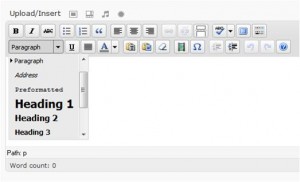If you are a website copywriter or have a website and have dabbled in producing your own content, you’ll probably have used the HTML H1 – H6 tags in some way, shape or form.
But do you fully understand their SEO capabilities?
We all know that a solid block of text on your website isn’t going to attract anyone. Your reader will see it and head for the hills. It’s just like when you were a little kid getting excited about the mystery present under the Christmas tree with your name on it. Eagerly you’d run your fingers around the paper trying to guess what was inside. When your finger found a seam that wasn’t covered in sticky tape, you’d rip the paper away. As your excitement grew it suddenly faded as the book fell in your lap. Even worse, it fell open to show page after page after page of text – no pictures!
OK, I got a bit carried away but you get the idea. Solid text is about as welcome as an angry skunk in a phone box. If you want people to read your website, it has to have loads of white space and be divided into bite size chunks. And the best way to do that is by using headings and sub headings.
Where do I stick my H1 tag?
Tempting…
OK, being serious for a second, your H1 tag – if you’re unsure – is normally used in the main header of a web page because it creates the largest font size. But not only that but it takes precedence over other text types when the search engine spiders come crawling by.
Because of this the H1 tag should:
- Appear only once on your web page
- Be at the top of your page content
- Contain your most important keyword
- Help your reader understand what your page is about.
What about the other tags?
The H2 – H6 tags are given slightly less priority over H1 but are still important. You often see the H2 and H3 tags being used for sub headings in web pages. These therefore should contain your longer tail keywords.
Of course the added bonus in getting used to using these tags means you’ll break up your text into smaller sections. This will increase the amount of white space on your page and consequently make it easier to read.
Your headings will act as sign posts so your reader can easily scan your page to find the information they are looking for.
How do I add these tags?
You’ll probably be using a WYSIWYG editor to enter your text which looks a bit like this one:

To choose your heading click on the button highlighted and you’ll see a choice of font types appear. Just type in your text, highlight it and then click on the text type you want.

Position is everything
You see, when you are preparing your copy for your website there is a lot more to think about other than what words you’re going to use.
You also have to consider what SEO features you want your site to have and exploit the positioning of your keywords to the max.
If you are using a freelance copywriter they should be able to advise you on this, but if you’re going it alone, hopefully this post will give you a better understanding of where to place your keywords and why.
The H tags are only a small part of on screen SEO but I hope that this blog post will help you review your current website and make a few changes to squeeze a few more drops out of your SEO.






0 comments ↓
There are no comments yet...Kick things off by filling out the form below.
Leave a Comment